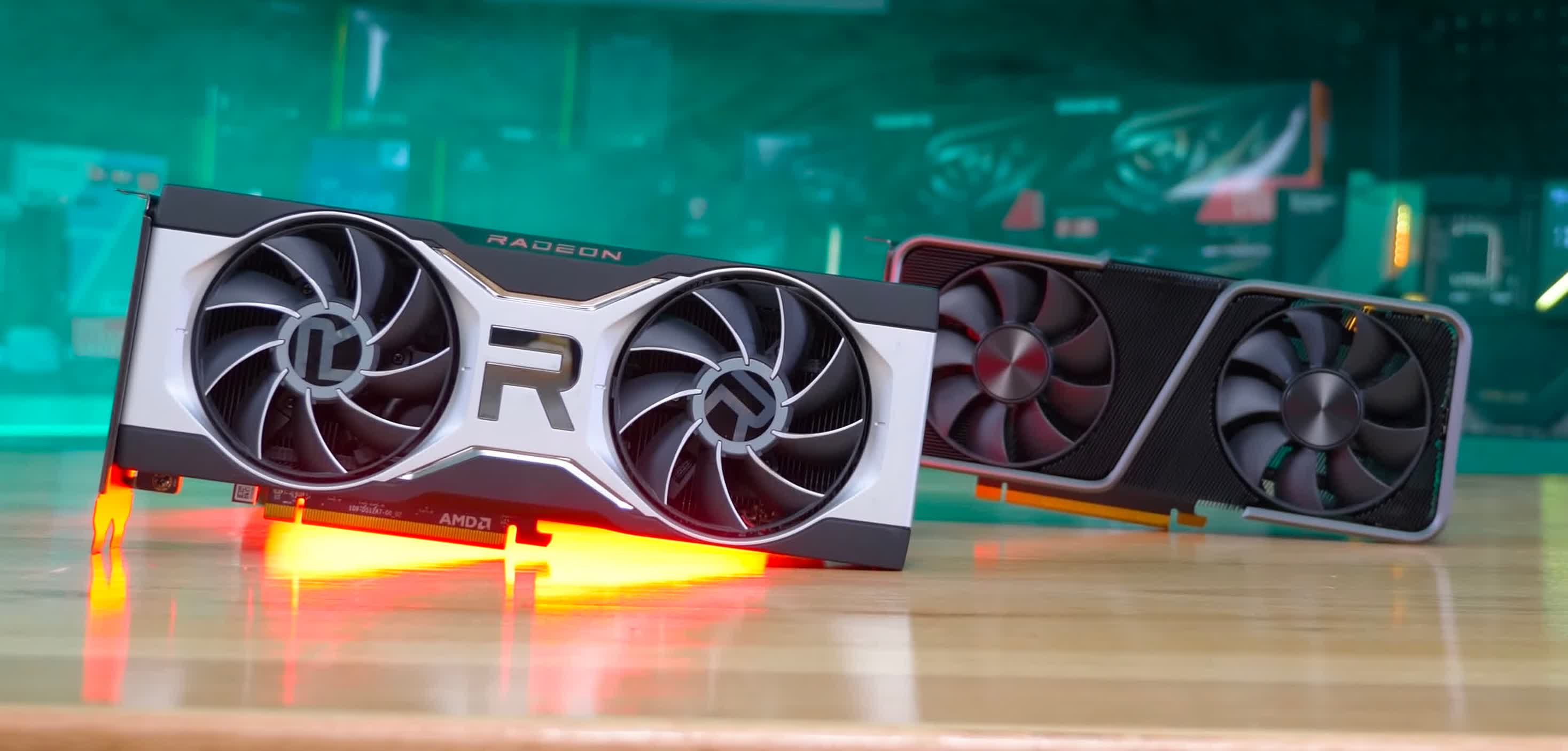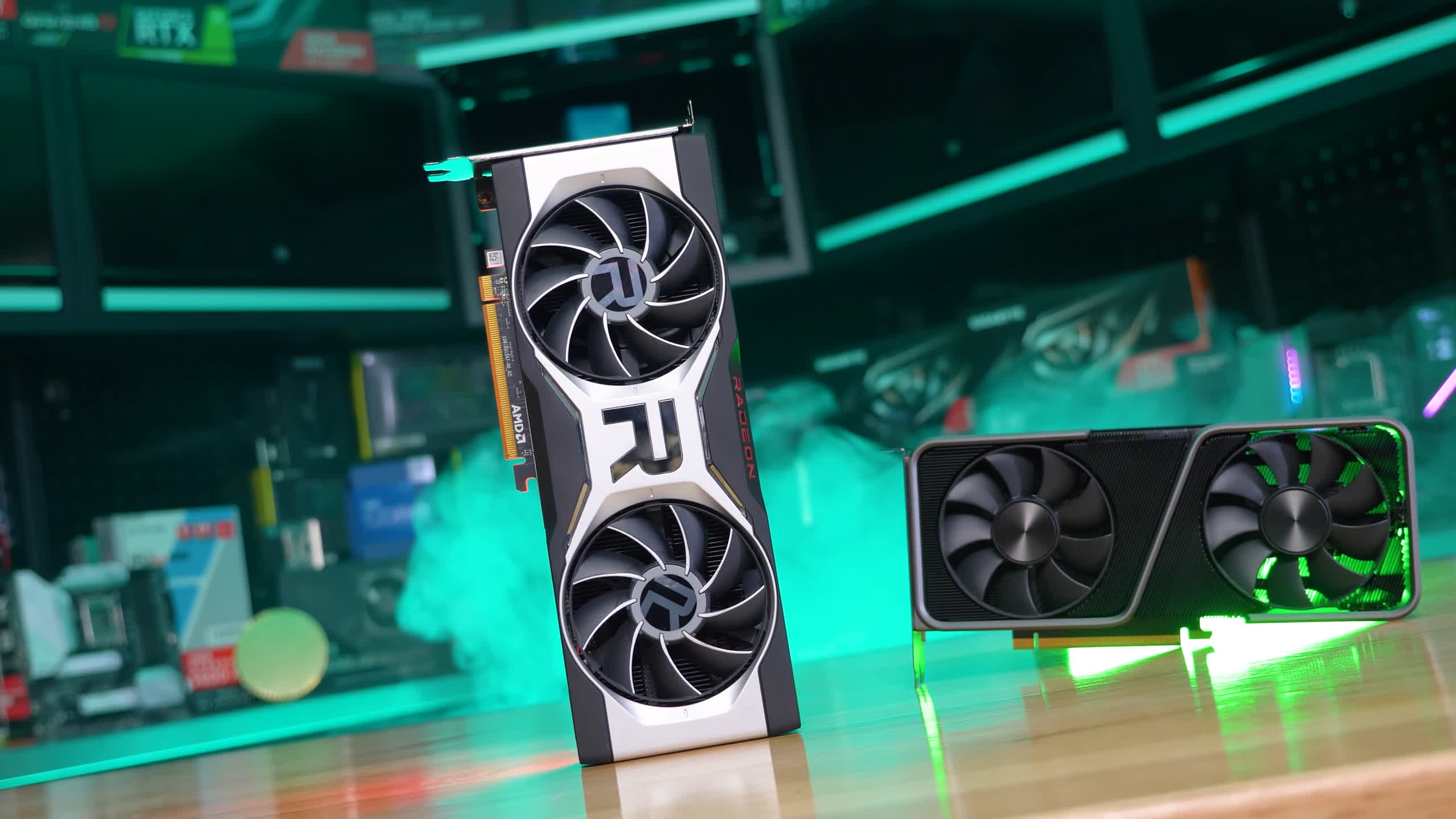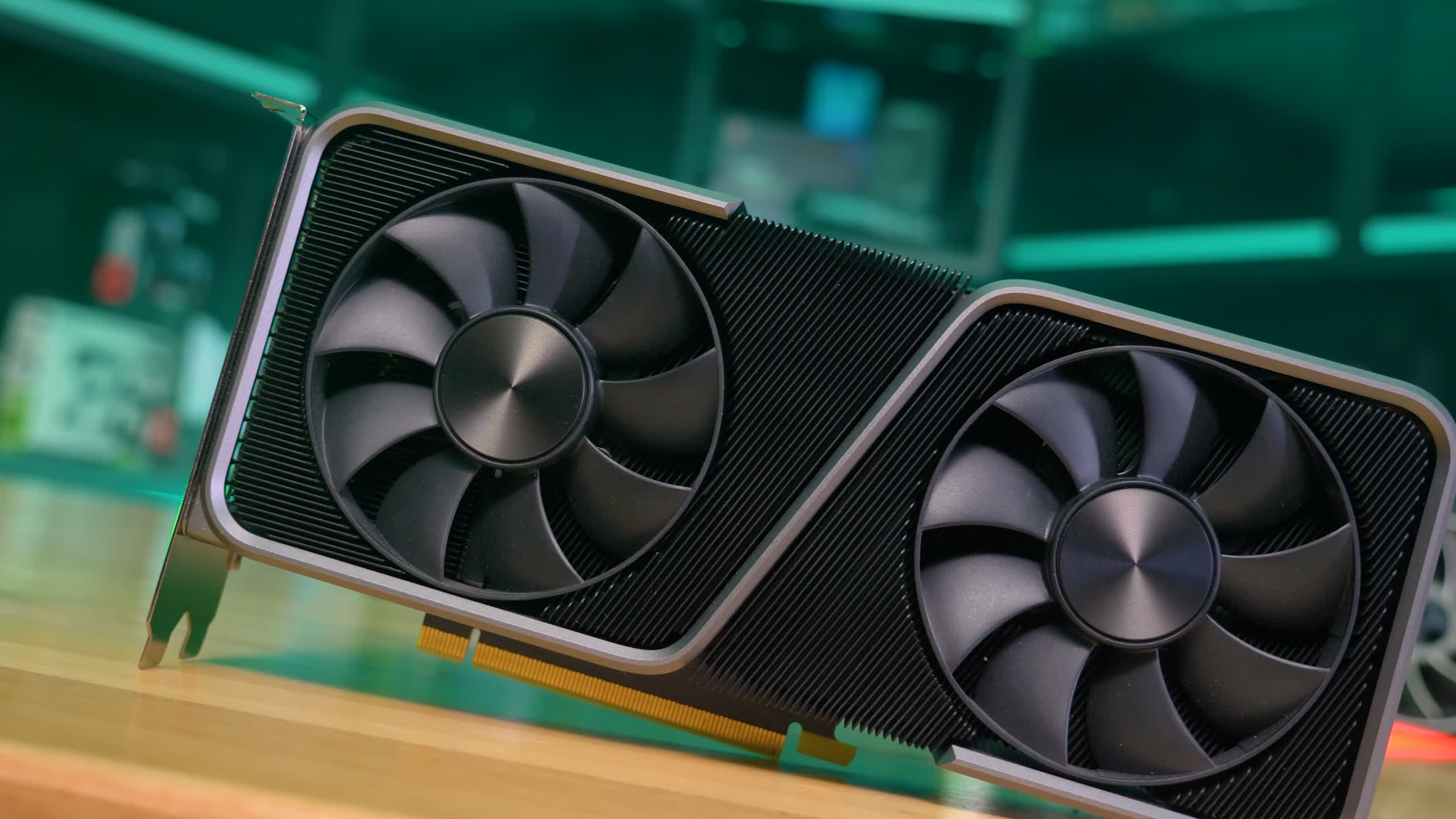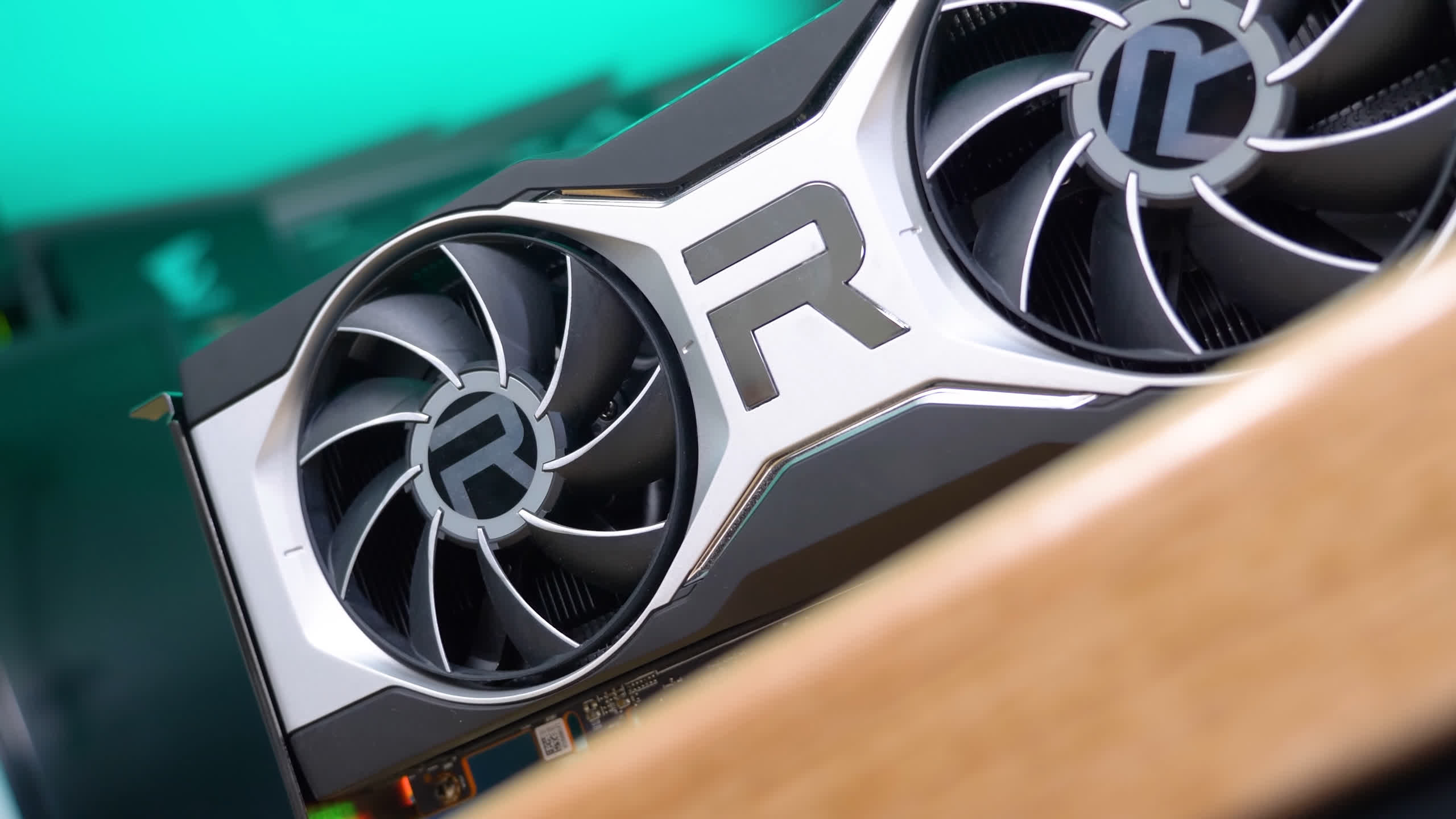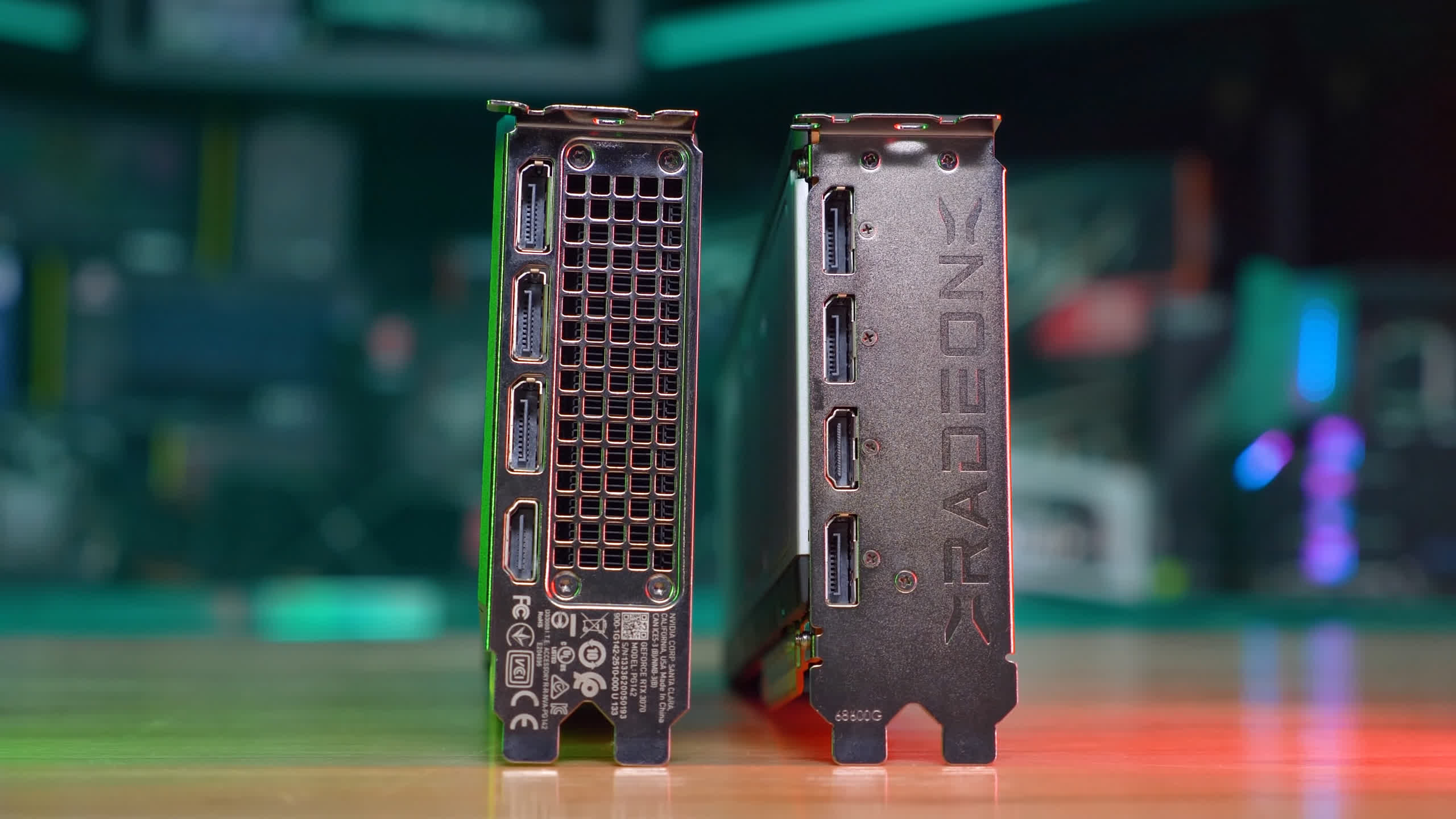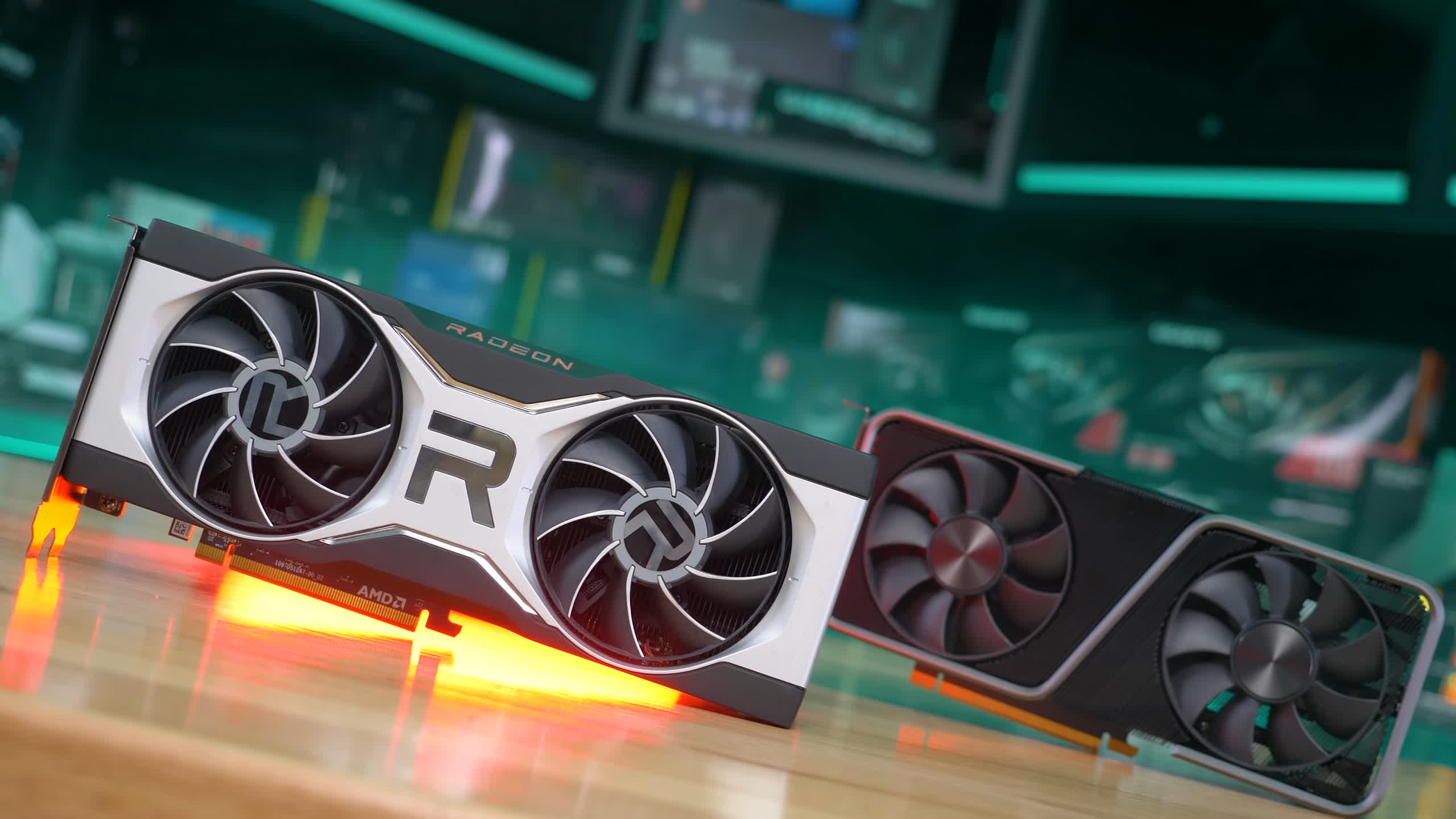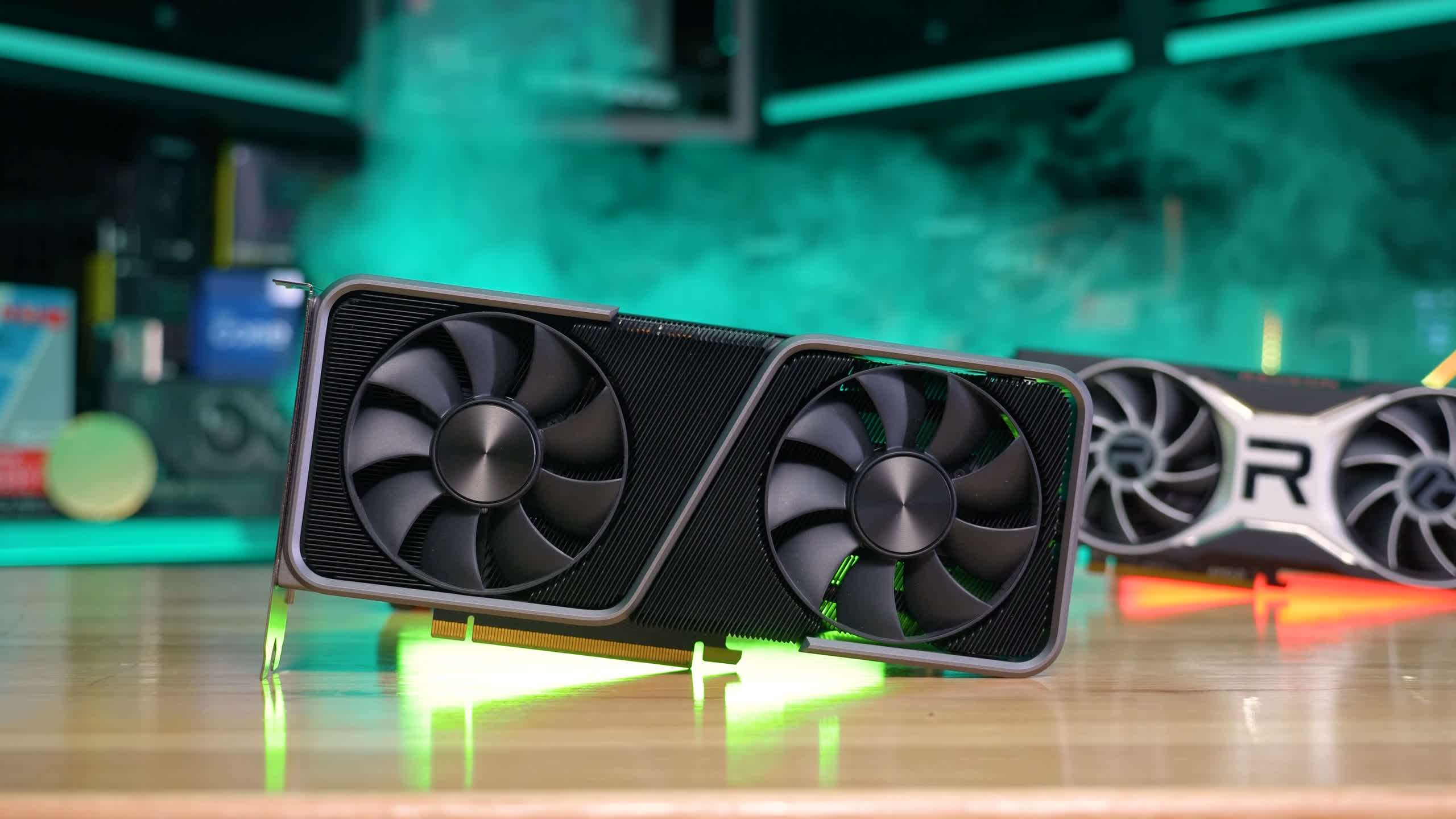Now that GPU prices are taking a breather and hopefully we'll only see more accessible graphics cards moving forward (and crossing fingers), let's take an updated look at the battle between the GeForce RTX 3070 and Radeon RX 6700 XT.
The RTX 3070 was released in October 2020 at an MSRP of $500, which of course we never really saw. Five months later AMD hit back with the 6700 XT at $480, which was another paper MSRP that never reached most prospective buyers. The point is though, these two GPUs are meant to be direct competitors, though current pricing is more favorable towards the 6700 XT as demand for Nvidia GPUs is usually higher.
As of writing, it's possible to purchase a Radeon 6700 XT for as little as $600, though most models are priced between $700 and $800. That's still well over MSRP, but pricing has come down considerably in recent weeks. Similarly, only three months ago the lowest price on an RTX 3070 was $1,100 and now they are closer to $900, with a Gigabyte model selling for just $850.
That means the 3070 is priced ~40% higher than the 6700 XT right now, which is obviously a significant markup, even if the GeForce GPU was ~10% faster last time we compared them over a year ago in a 45 game benchmark.
A lot has changed since then, we've seen numerous driver updates from both camps, along with significant game updates and new releases such as Forza Horizon 5, God of War, Dying Light 2, Warhammer III, Halo Infinite, Rainbow Six Extraction, and the list goes on. We're also testing with Resizable Bar enabled for these head to heads, so it will be interesting to see how much of a difference all these changes make.
For testing we're using a Ryzen 9 5950X test system with 32GB of DDR4-3200 CL14 dual-rank, dual-channel memory. Both GPUs were tested at 1080p, 1440p, and 4K across 50 games, using Windows 11. The driver used were Radeon Adrenalin 22.2.3 and GeForce Game Ready Driver 511.79.
Let's now take a closer look to some of the result highlights of about a dozen of games and then we'll show you how these two GPUs compare head-to-head across all 50 games tested in a single graph.
Benchmarks
Starting with Dying Light 2, we find very competitive performance between these two GPUs and quite surprisingly it's the RTX 3070 that does best at 1080p, winning by a 7% margin. The margin comes down to just 4% at 1440p and almost the same at 4K, which is to say there's no noticeable performance difference.

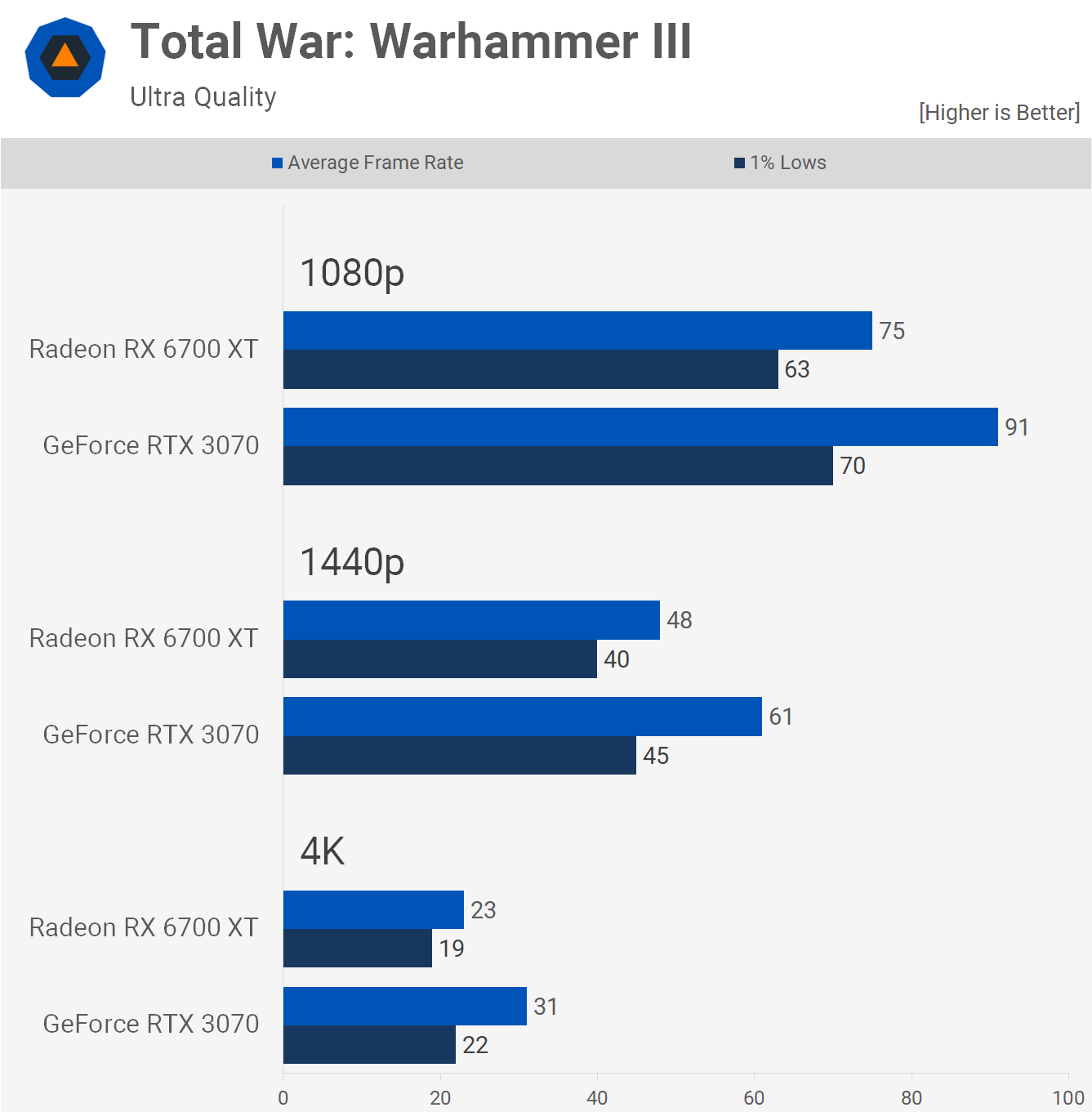
The 6700 XT gets slapped about in Total War Warhammer III. Here the RTX 3070 was 21% faster at 1080p, 27% faster at 1440p, and a massive 35% faster at 4K.
The 1440p results are the most troubling for AMD as they struggled to get anywhere near 60 fps, which we'd consider an ideal frame rate for this game. Of course, lowering quality settings will do the trick, but you won't need to do that with the RTX 3070 for a 60 fps experience.
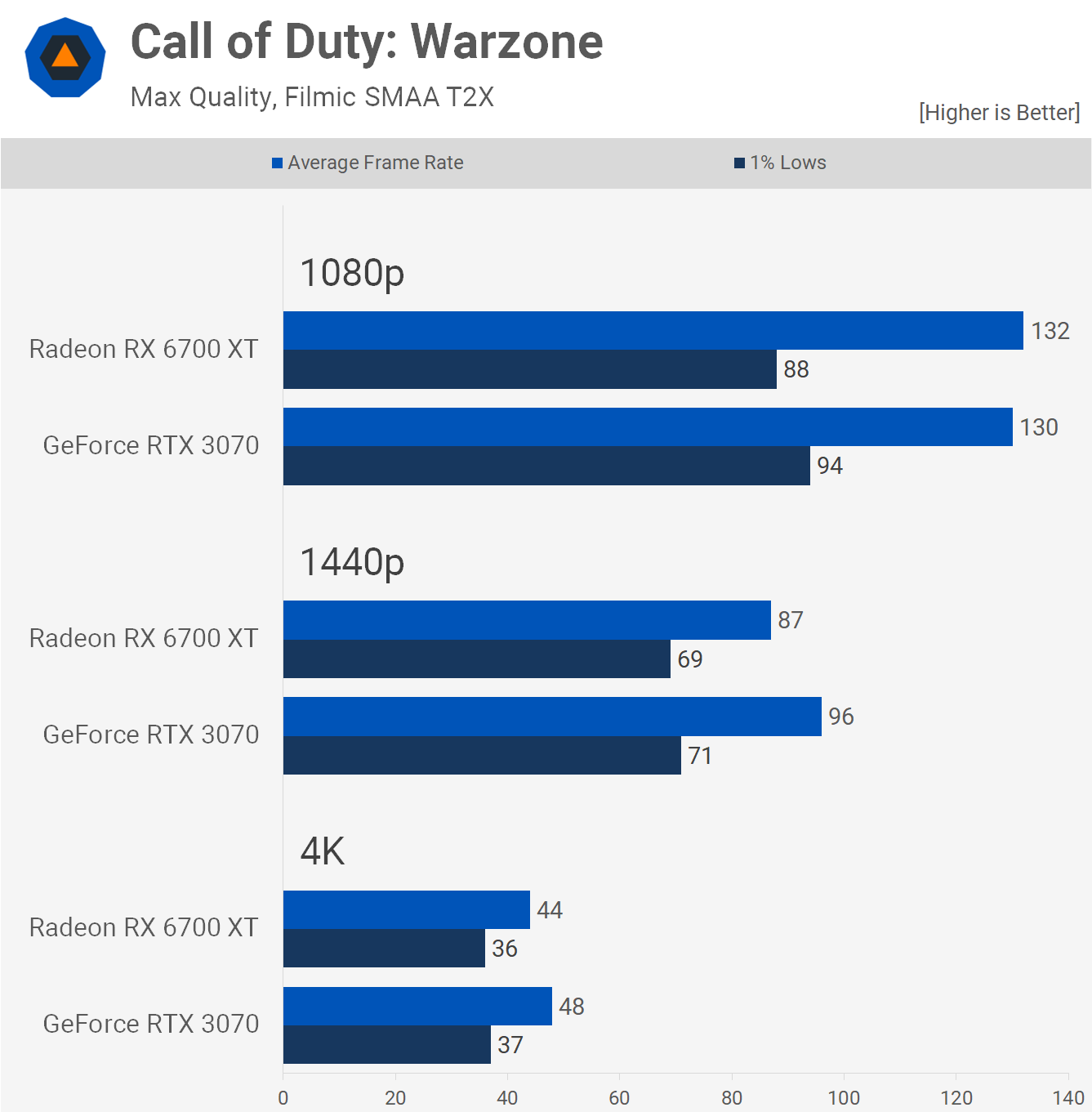
Performance in Call of Duty Warzone is far more competitive. We're looking at basically identical performance at 1080p. The 3070 does creep ahead by 10% at 1440p, and this was maintained at 4K. A reasonable performance uplift for the GeForce at higher resolutions.
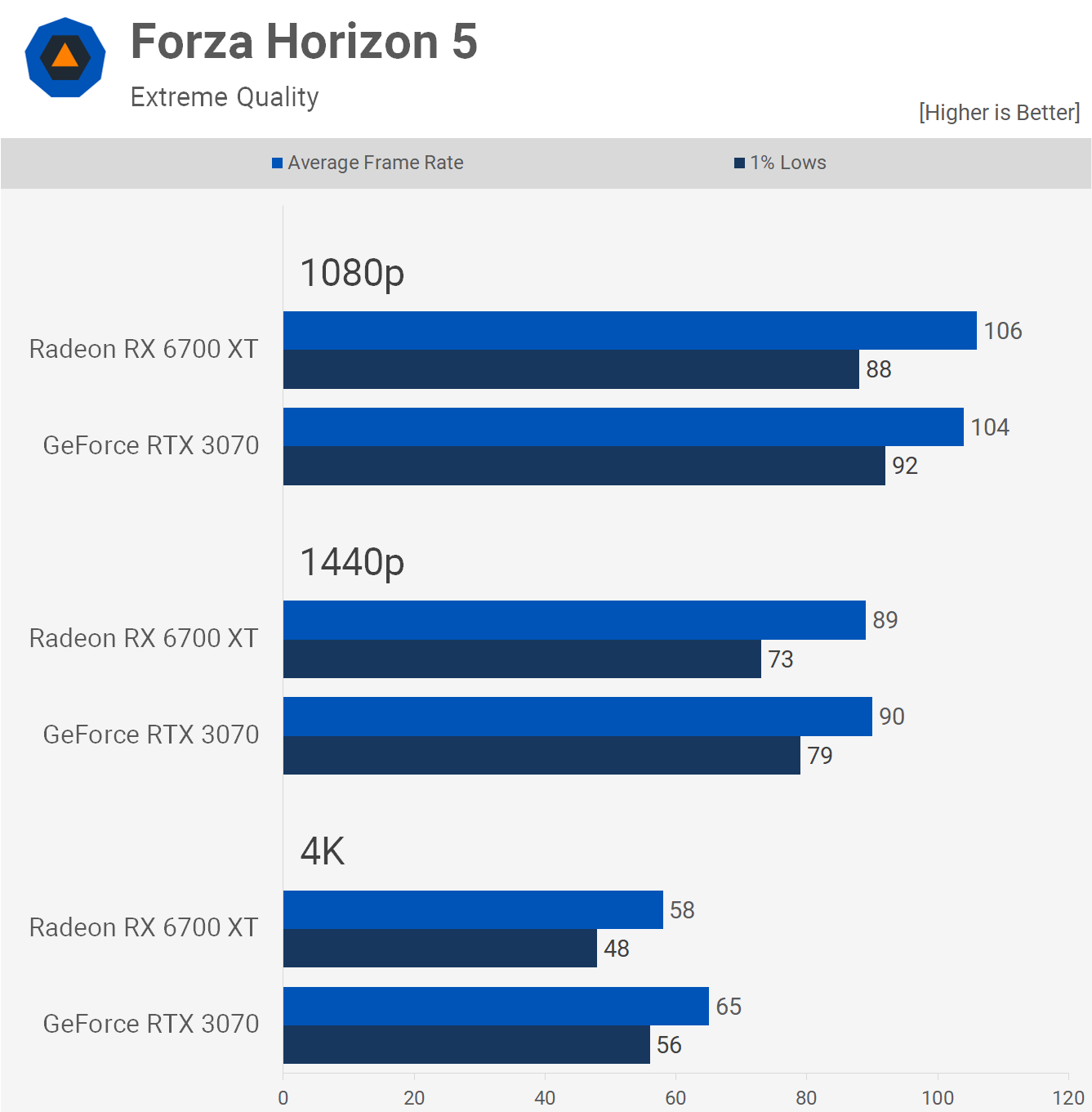
Forza Horizon 4 heavily favored AMD graphics cards and Forza Horizon 5 is no different. The RTX 3070 manages to pull ahead at 4K, and then 1080p and 1440p results were neck and neck, at least when looking at the average frame rate. The RTX 3070 did perform a little better when it came to the 1% lows.
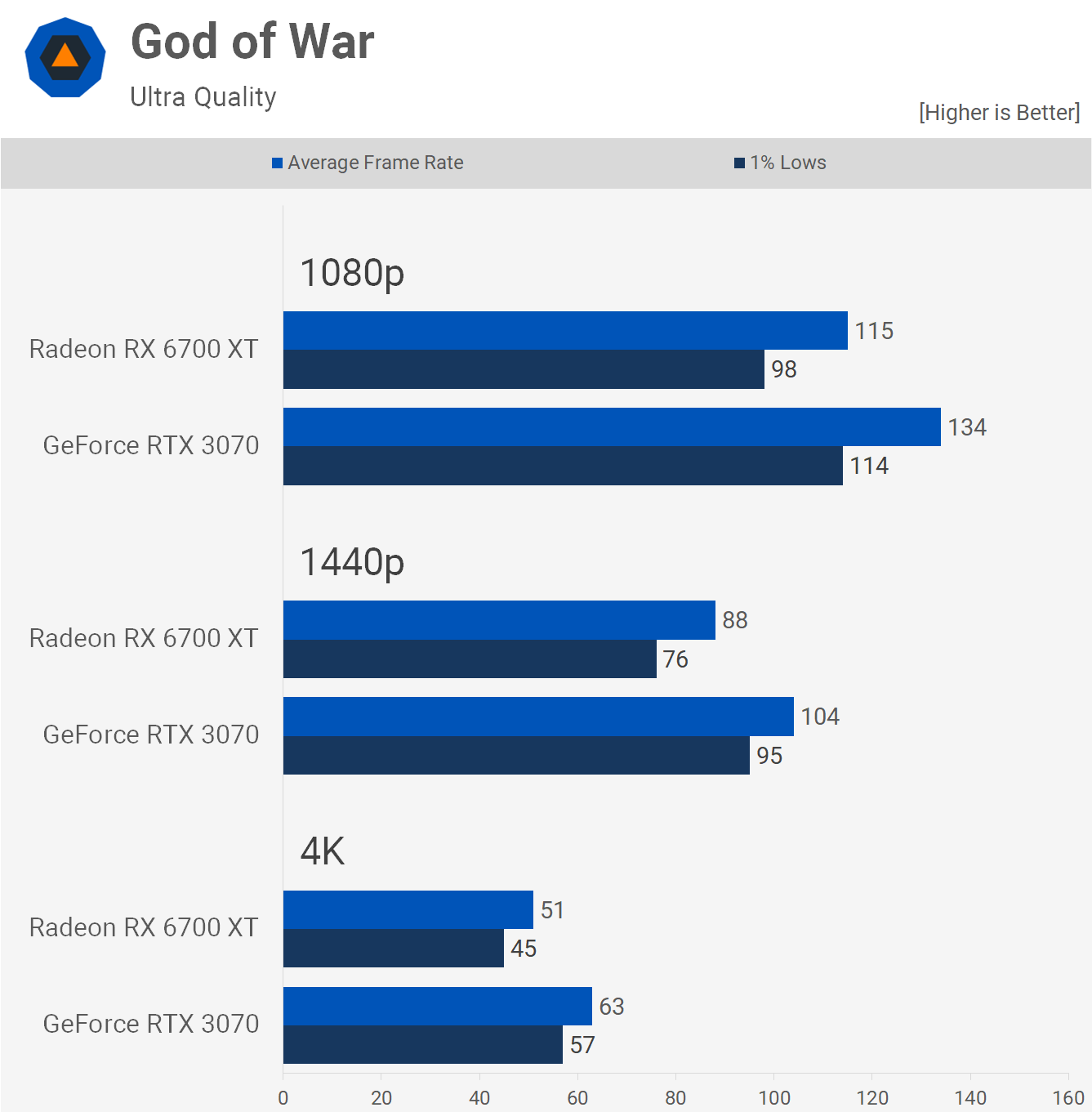
God of War is a recently released title on PC that looks amazing when using the ultra quality settings. The game plays well on both GPUs despite the RTX 3070 clearly being the faster solution with 17% greater performance at 1080p, 18% at 1440p, and 24% at 4K.
An easy win for Nvidia, helping justify the price premium.
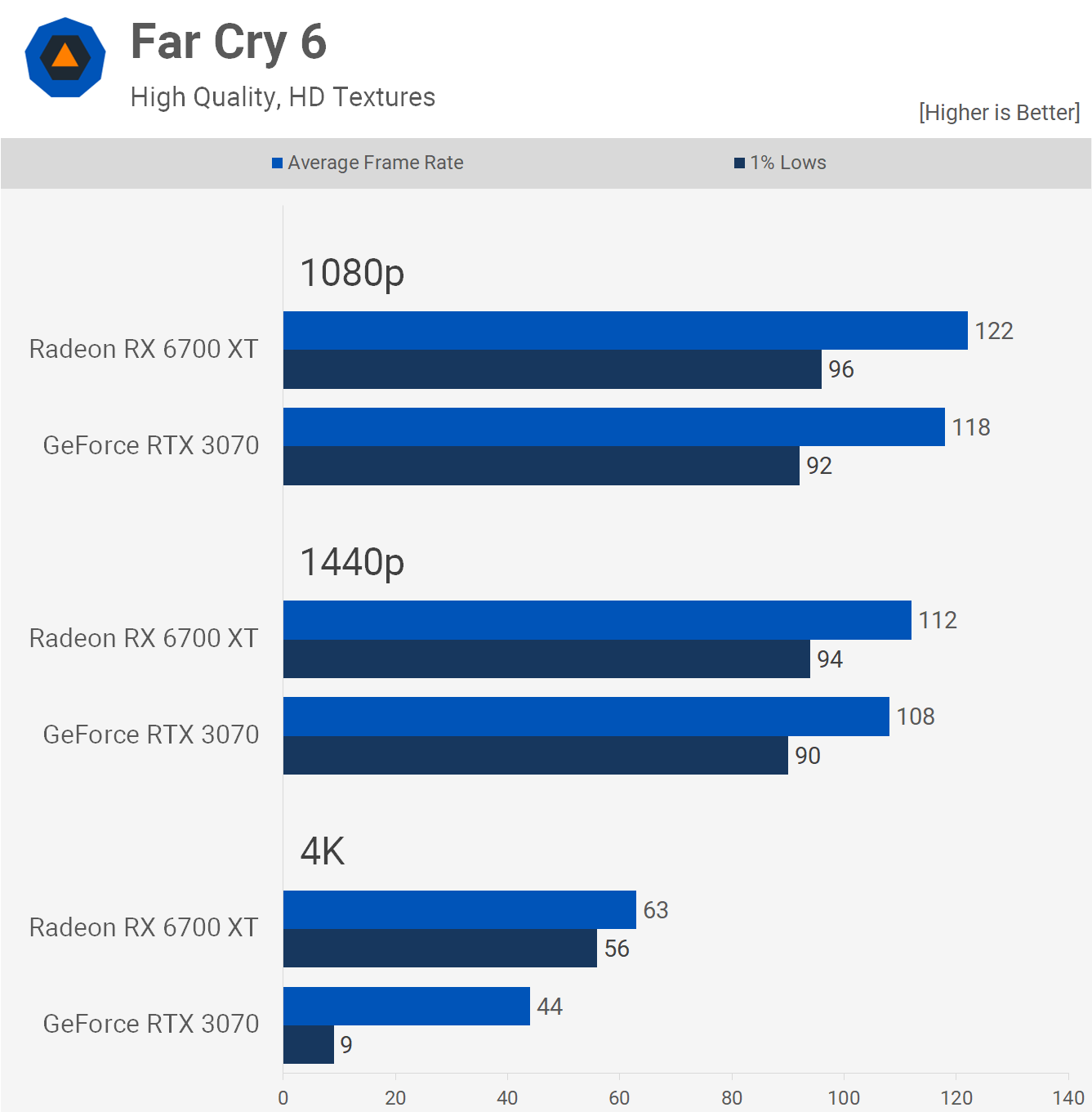
Far Cry 6 results are very interesting. We're not using the 'ultra' quality preset, but the dialed down 'high' preset with the HD texture pack enabled. This results in competitive performance at 1080p and 1440p with a ~5% or less margin between the two GPUs. However, it all goes horribly wrong for the RTX 3070 at 4K as we run out of VRAM and frame stuttering becomes a major issue, resulting in 1% lows of just 9 fps.
Although the Radeon 6700 XT is seen to be 43% faster when comparing the average frame rate, for Nvidia it's a complete fail under these conditions. We're starting to see a few scenarios where 8GB of VRAM isn't enough for driving the latest titles, at least without compromising on visuals such as high-res textures.

F1 2021 enables ray tracing by default when using the ultra high quality preset, which we've done for this test. This hurts the Radeon and as a result we see the RTX 3070 running 13% faster at 1080p, 20% faster at 1440p, and 29% faster at 4K. Another big win for Nvidia and not something that we used to see in the previous F1 2020 title.
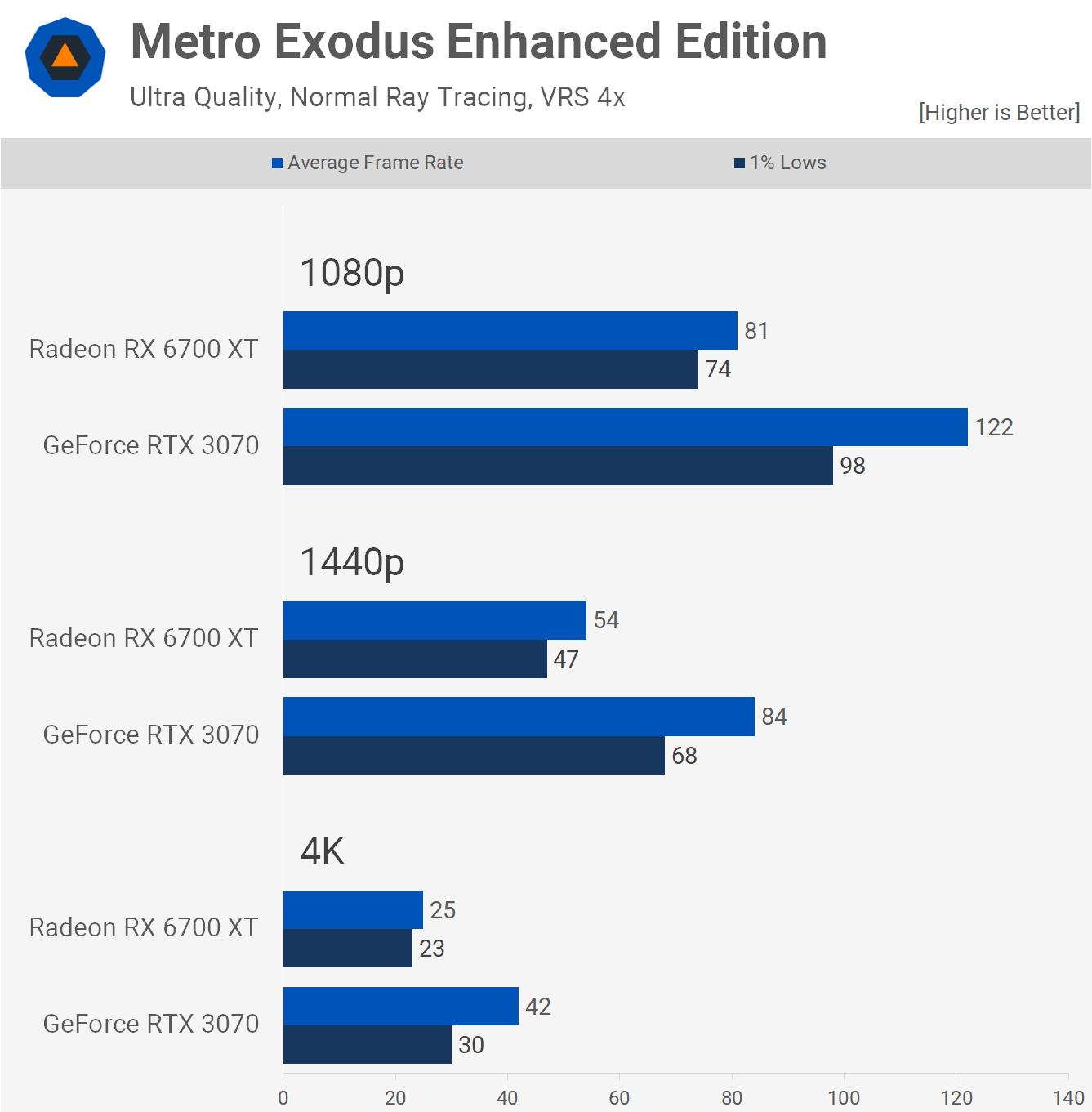
Metro Exodus Enhanced requires ray tracing, so this is another game that we tested with ray tracing enabled, opting for the 'normal' quality mode with VRS set to 4x. This heavily favors the RTX 3070, allowing it to pull ahead at 1080p by a 51% margin, 55% at 1440p, and 68% at 4K where the 6700 XT was unusable. This is an Nvidia sponsored title that was developed before the existence of RDNA2, so clearly it heavily favors the GeForce architecture, but it's also a real game you can play.

Rainbow Six Extraction performance is somewhat close, though less so at 4K. The RTX 3070 was 7% faster at 1080p, 10% faster at 1440p, and 21% faster at 4K. Things do get away from the Radeon at 4K, but at 1440p and 1080p it'd be hard to tell them apart.

Both GPUs perform well in Apex Legends, though the RTX 3070 delivers 11% greater performance at 1080p and 9% at 1440p, but still both pumped out well over 100 fps.
Where the margin could be felt is at 4K where the 6700 XT managed 79 fps to the RTX 3070's 96fps, a rather massive 22% advantage for the GeForce GPU.

The GeForce RTX 3070 is the faster GPU for playing Fortnite, offering 12% more frames at 1080p, 16% more at 1440p, and a massive 58% more at 4K. The Radeon 6700 XT really crumbles at 4K, showing it's better suited for 1440p gaming in this title.
A few testing notes worth mentioning: the Fortnite data shown here isn't directly comparable with previous benchmarks we've run on RTX 3080 vs. 6800 XT comparisons as the game has received major updates which broke older replays, so we're testing a completely different match.

Cyberpunk 2077 is the last game we're going to look at. The RTX 3070 offers 10% more fps at 1080p, 12% more at 1440p, and 22% more at 4K, though neither GPU was entirely suitable at 4K with well under 60 fps on average, which isn't what you'll want from a GPU at this kind of prices.
50 Game Head-to-Head
Based on the first dozen or so games we just looked at, the RTX 3070 looks to be well ahead of the 6700 XT except for Far Cry 6. The GeForce has also shown the most advantage at 4K, but before we draw any conclusions, let's take a look at the data across all 50 games tested...
Starting with the 1080p data we find that the RTX 3070 was 11% faster on average, providing superior performance in the majority of the games tested. The 3070 was slower by a margin greater than 5% in just two of the games tested: Doom Eternal and Assassin's Creed Valhalla.

Meanwhile, it was 5% faster or more in 34 of the 50 games tested, meaning there were just 14 games where the margin was less than 5% in either direction. The really big RTX wins came in Metro Exodus EE, War Thunder, Resident Evil Village, Vermintide 2, PUBG, Kingdom Come Deliverance, Control, Serious Sam 4, Warhammer III, and Microsoft Flight Simulator.

Moving to 1440p, the margin increases in Nvidia's favor, so now the RTX 3070 is 13% faster on average. That's a slight increase over the 45 game test from a year ago. If you were to remove the two best games for Nvidia (Metro and PUG), the RTX 3070 was still 12% faster on average, and that's the beauty of testing such an extreme range of games.
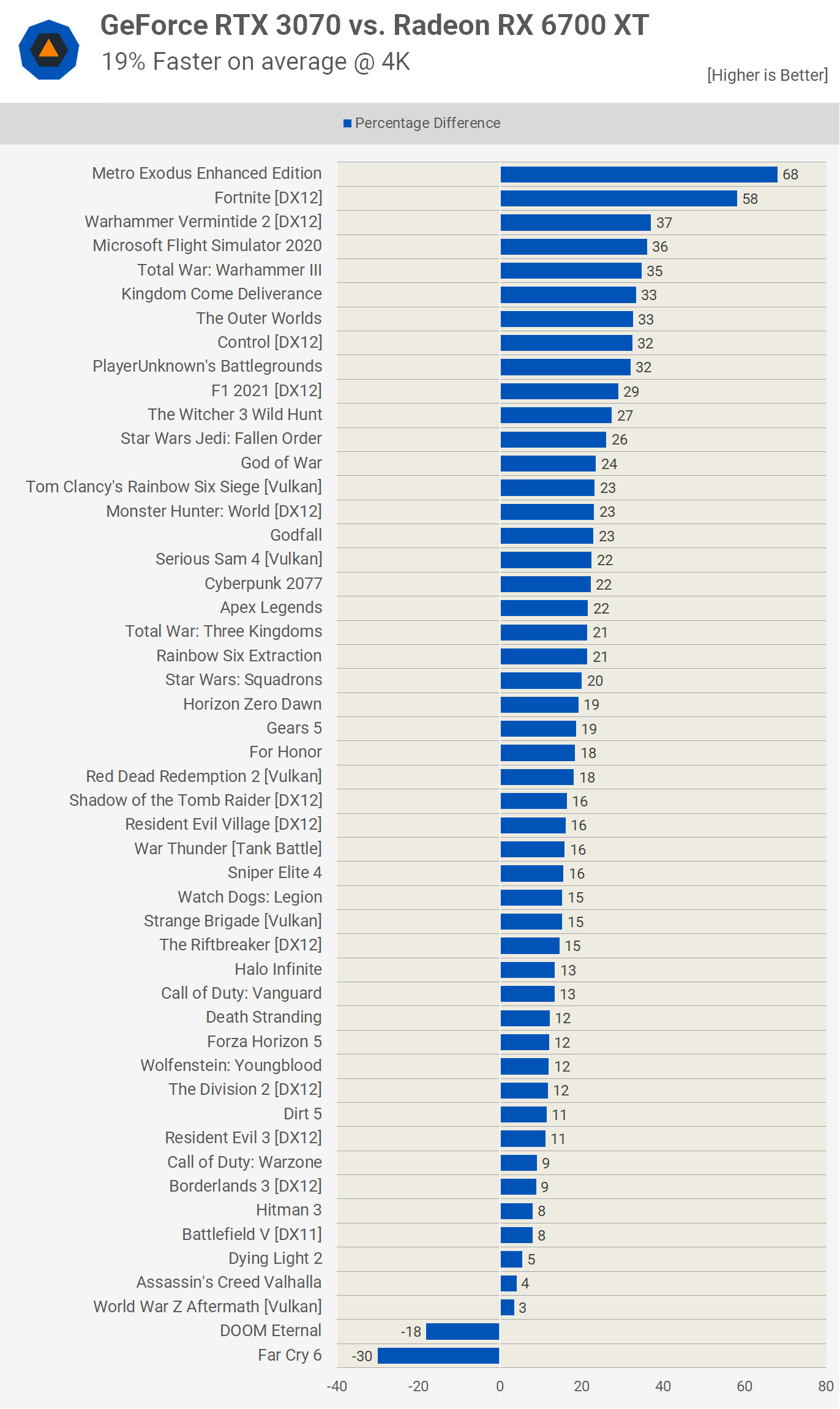
The RTX 3070 is 19% faster on average at 4K. That's a big performance advantage for those targeting this resolution. The only potential issue for the RTX 3070 here is VRAM usage, which was clearly a problem in Far Cry 6. Disabling the HD texture pack solves it, but we feel disabling high quality textures when spending $500+ on a GPU for that premium experience, isn't something most will want to do. Far Cry aside, for the vast majority of games available today, the RTX 3070 offers a far better 4K gaming experience.
And the Winner is...
When revisiting this shootout, it appears the GeForce RTX 3070 seems to be doing a little better than the Radeon RX 6700 XT. Numerous driver and game developments have helped the RTX 3070 in the past year. For example, GeForce performance in Assassin's Creed Valhalla was recently addressed, reducing the margin from 10% in favor of the 6700 XT to just 4%.
There's also a number of new releases that clearly favor Nvidia GPUs, such as Warhammer III, God of War, and Halo Infinite. That's all very positive for the RTX 3070. There's still the matter of VRAM. Although 8GB remains enough for the most part, we're starting to see examples where it isn't. On the upside, you can work around the issue with minimal impact to visuals at least for now.
Before we continue, we thought it'd be interesting to see what we said a year ago when comparing these two GPUs...
If you had the luxury of buying either GPU at or near the MSRP, which one should you get? Between the two, our pick would be the GeForce RTX 3070. It just happens to be the case I'm a Fortnite player and the GeForce GPU is already faster before you even enable DLSS, making it the obvious choice for me. I also only play multiplayer games and typically opt for competitive-type quality settings, so memory capacity is not an issue.
We also like the higher recording quality when using NVENC. It's a small improvement when recording, but it is better and if you stream it's a lot better.
Ray tracing support keeps maturing, but as you likely know by now, that's of zero interest to me. It's nonetheless an additional feature of the GeForce RTX series which you may care about. DLSS support is also rather limited, but if you can take advantage of it in the games you play, the performance benefits can be quite substantial.
Looking back, our opinion hasn't changed all that much. DLSS quality and game support has only improved and the same is also true for ray tracing. However, what has changed is the pricing and as mentioned earlier, the 6700 XT can now be had for $600, while the RTX 3070 costs more like $850. It's a moving target, but that's a 42% price premium for the GeForce GPU.
Despite the benefits of superior ray tracing performance, DLSS, NVENC and overall better rasterization performance, we don't think the RTX 3070 is worth the 40% premium. Somewhere around 20% extra, sure, but not double that figure. It's also hard to justify spending the extra money on a GPU with just 8GB of VRAM. It's our opinion that Nvidia messed up with VRAM capacity on their initial Ampere GPUs, but in this crazy market they had no issues selling them at all.
If we had to purchase one of these two GPUs at these prices right now, we'd go with the Radeon RX 6700 XT. If the RTX 3070 was just $100 more than the 6700 XT, that'd likely change my mind. As it turns out, both AMD and Nvidia made out extremely well with both products, selling literally anything they could produce, well, anything but the 6500 XT.
